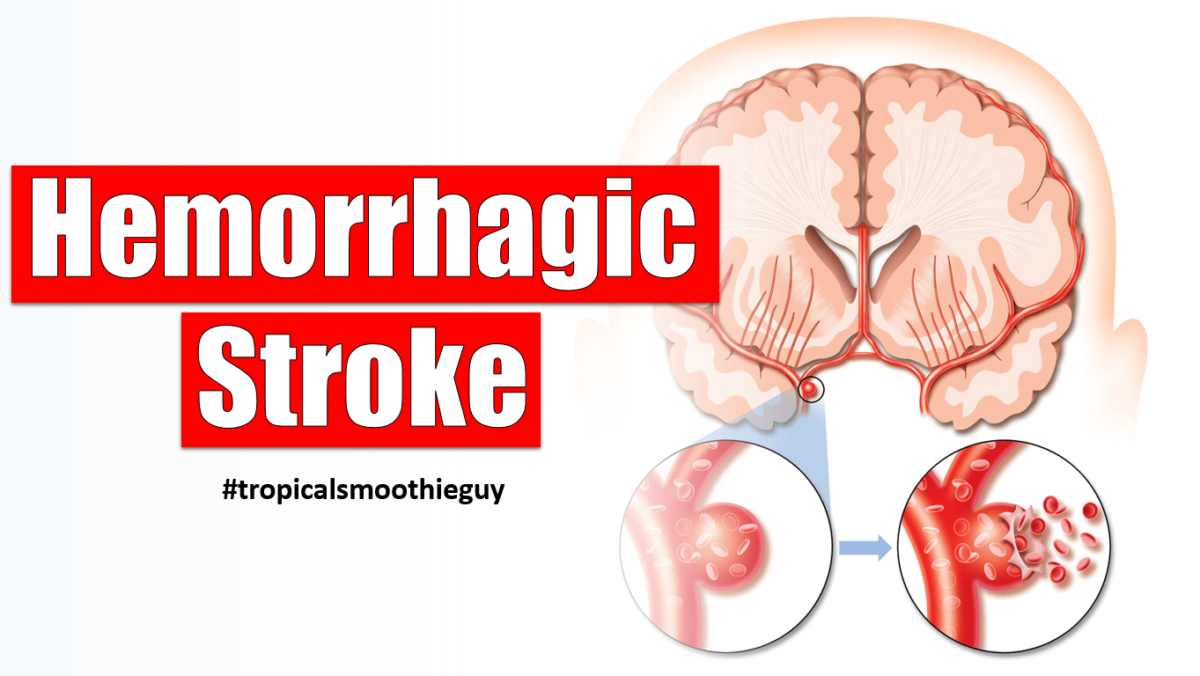The Basics of Hemorrhagic Strokes
 Elyse Newland is an Occupational Therapist who loves her work but is frustrated with the state of U.S. healthcare. She works specifically with stroke survivors and continues to explore ways to route around the system to get survivors the resources they need. Elyse makes stroke information and treatment simple via her weekly blog post on her website and her weekly YouTube video. She also provides teletherapy for stroke survivors in TN, GA, NC, OR, and CA. You can find her at https://elysenewland.com/
Elyse Newland is an Occupational Therapist who loves her work but is frustrated with the state of U.S. healthcare. She works specifically with stroke survivors and continues to explore ways to route around the system to get survivors the resources they need. Elyse makes stroke information and treatment simple via her weekly blog post on her website and her weekly YouTube video. She also provides teletherapy for stroke survivors in TN, GA, NC, OR, and CA. You can find her at https://elysenewland.com/Hemorrhagic strokes are the second most common type of stroke. They account for almost 13% of all strokes, according to the American Stroke Association (ASA).
Typical Causes
Hemorrhagic strokes are the result of a blood vessel that bursts and bleeds in the brain. This puts increasing pressure on the brain, and cell death can happen within minutes. Let’s look more in-depth at some common causes.
Uncontrolled High Blood Pressure
Blood pressure that is not well controlled can have serious consequences. High blood pressure can cause damage and weaken arteries. Weakened arteries in the brain can rupture and lead to a hemorrhagic stroke. This is why blood pressure management is so important.
Aneurysms
An aneurysm is a weakened blood vessel that ends up bulging and sometimes ruptures. The ASA notes that aneurysms develop over time and are more common in people over 40. They often develop due to constant pressure from blood flow.
Aneurysms grow slowly and weaken as they enlarge. It’s unknown how to predict when or if they will rupture. High blood pressure can weaken arteries, and straining can increase blood pressure.
Arteriovenous Malformations (AVMs)
An AVM is something that people are usually born with. They occur in less than 1% of the population, according to Harvard Health. An AVM consists of an abnormal tangle of arteries and veins.
- Arteries bring blood that is rich in oxygen from the heart to the rest of the body.
- Veins transport the blood that has delivered the oxygen (and now needs to be oxygenated) back to the heart.
- Capillaries are tiny vessels that connect arteries and veins. They also exchange nutrients from the blood to surrounding tissues.
An AVM changes and disrupts this natural process. It connects arteries directly to veins and completely bypasses capillaries. These fragile, tangled vessels can become damaged over time. This leads to a rupture and resulting hemorrhage.
Types of Hemorrhagic Strokes
Intracerebral Hemorrhage
This type of hemorrhagic stroke is two times more common than those caused by a subarachnoid hemorrhage.
An intracerebral hemorrhage can happen deep in the brain or towards the surface. It occurs when thin-walled arteries in the brain burst and cause blood to flow into the brain tissue. This forms a hematoma: a clotted or partially-clotted pool of blood.
The part of the brain that the ruptured artery served now becomes starved of oxygen. This is when brain cell death occurs.
Pressure can also build-up and cause the brain to press against the skull. Surgeons may have to remove the hematoma to reduce pressure within the skull.
Subarachnoid Hemorrhage
This type of hemorrhagic stroke occurs in the subarachnoid space between the brain and the skull. This space is filled with cerebrospinal fluid (CSF) which cushions the brain.
Subarachnoid hemorrhages are often caused by a ruptured aneurysm. This causes blood to enter the subarachnoid space, putting pressure on the brain. The area of the brain served by the ruptured artery begins to die due to a lack of oxygen and nutrients.
This bleeding can also interrupt the normal flow of CSF. It can cause the ventricles to enlarge due to the extra fluid in the brain, aka hydrocephalus. The ventricles are cavities deep in the brain and are responsible for producing and transporting CSF.
And that’s a wrap! We’ve covered the 4 main types of strokes, and the basics of ischemic and hemorrhagic strokes. Stay tuned for upcoming posts on how the effects of a stroke change based on brain location and a series on neuroplasticity!


